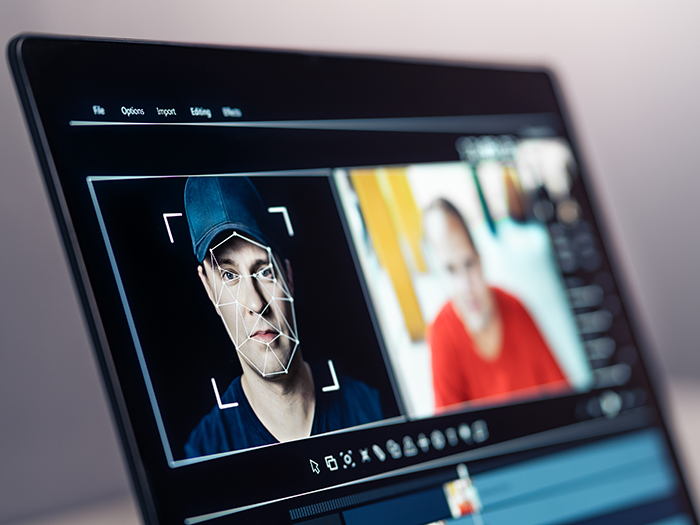How Technology Can Keep Injured Workers Happy and Unplug the Attorney Hotline

Artificial intelligence and other technologies are helping employers better understand injury trends and are saving money in the process.
While the idea of new technology and AI in workers’ compensation may conjure up images of robotic-like wearables and large data sets, there’s a way to use these tools to keep workers’ safer and support a worker advocacy approach.
“Technology can really benefit employers in many ways, but particularly with respect to their responsiveness to injured workers and to the advocacy programs for injured workers,” said Dr. David Deitz, principal at David Deitz and Associates and chief medical advisor at ChronWell.
“I certainly wouldn’t want to give anybody the impression that this is just an artificial intelligence kind of program. It’s a marriage of a technology platform with a strategically directed claim services that often can include other professionals reaching out to the injured worker.”
Chronwell’s Recovry and Recovry Central platforms are designed to leverage AI and data analytics in order to make the treatment process easier for injured workers to navigate. They focus on early intervention and streamlining communication to make sure injured workers feel cared for during the process.
“The mix between no early intervention and process-centric intermediation is our theory as to why comp is so expensive,” Joe Rubinsztain, CEO of ChronWell, told Risk & Insurance® in July.
“There is very little attention paid to the injured worker at the moment of the injury, the attention usually starts at the moment of the claim. And once there’s a claim, it’s an administrative process with a heavy dose of intermediation and very little human element,” he continued.
Using technology doesn’t just help employers streamline communication with injured workers, however. They can also create a database of injuries that can help them see ways to connect their pre- and post-loss strategies.
At the 2019 National Workers’ Compensation and Disability Conference® & Expo in November, Deitz will be discussing the connection between pre- and post-loss and how technology can help drive the claims advocacy movement in a session titled, “Leveraging Technology to Connect Pre- and Post-Loss Strategies.”
Communication Begins When an Injury Occurs, Not When a Claim Is Filed
Deitz emphasized that for worker advocacy to be at the forefront of a workers’ compensation program, communication must begin as soon as an employee is injured, not the moment they file a claim.
“The earlier you can engage with your claims, the better,” Deitz said.
“It makes injured workers feel like their claim is being handled effectively and efficiently and they like when they’re being listened to. If you feel like someone’s listening to you, it’s going to make you feel a lot less apprehensive about your recovery. You may be less likely to get an attorney, and you may be more satisfied with your overall care.”
With the advent of smartphones and other mobile technologies, instantaneous incident reporting can help employers begin communicating with their employees the moment that they are injured and that’s something ChronWell takes advantage of. 
“The injured workers are using their own mobile phones,” said Deitz. “The mobile technologies allow you to take pictures of where the accident occurred. You can attach documents and send them directly to wherever they need to go.”
During his NWCDC session, Deitz will be speaking alongside Santiago Martion, CEO of Trilogy Personnel & Land Management, California Farm Management. Martin is an employer who has used some of these technologies with his workers.
Martin is an agricultural employer whose business is spread over a large geographic area. Because of the nature of the work, workers often move to different locations.
“Using our platform and using the mobile technologies, the farm work operation was able to understand the nature of their injuries much better,” Deitz said.
“I don’t want to suggest that everything good that happened was completely attributable to the ChronWell’s intervention. But we were very helpful in terms of helping them be on top of cases when they happened.”
Using Data From Claims to Prevent Future Injuries
Using mobile devices for reporting doesn’t just help companies achieve worker advocacy, however. It also allows employers to collect data and watch emerging patterns of injuries.
“The employer can track injuries. They can create risk profiles, and a risk score cards and understand the nature of the claim,” Deitz said.
The ability to track injuries and see what patterns emerge allows employers to connect their workers’ compensation and post-injury programs with their safety and pre-loss strategies.
“Our technology enables the creation of a database of incidents. Creating a good set of analytics on both workplace incidents and workplace claims, allows employers to look and see what kind of risk adjustments they need to make,” Deitz said.
“This is one area where the technology can benefit employers not just with managing injuries which would be the post loss situation, but also with informing their strategies to perhaps avoid some losses in the future.” &
About the National Workers’ Compensation and Disability Conference® & Expo:
As the largest National Workers’ Comp and Disability Conference for more than 25 years, NWCDC offers endless opportunities that will propel your workers’ comp and disability management programs forward. With the biggest Expo in the industry, you’ll be able to touch, compare and contrast the newest solutions from leading vendors in every category, and gain knowledge on-the-go at in-depth sponsored sessions on the show floor. Additionally, NWCDC offers valuable networking opportunities so you can make important contacts and share strategies with your peers.
You can also customize your learning experience with breakout sessions in six distinct program tracks: Claims Management, Medical Management, Program Management, Disability Management, Legal/Regulatory, and Technology. Plus, you’ll hear from Risk & Insurance’s Teddy Award winners for excellence in lowering workers’ comp risk.
Learn more about NWCDC and special savings for Risk & Insurance® subscribers here.










